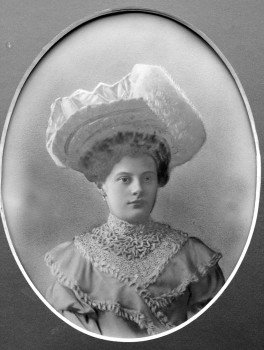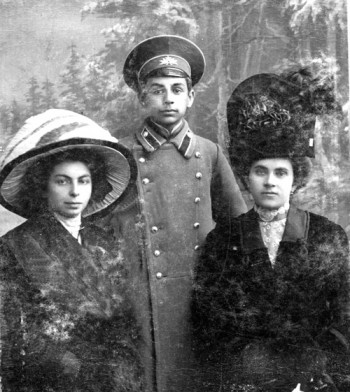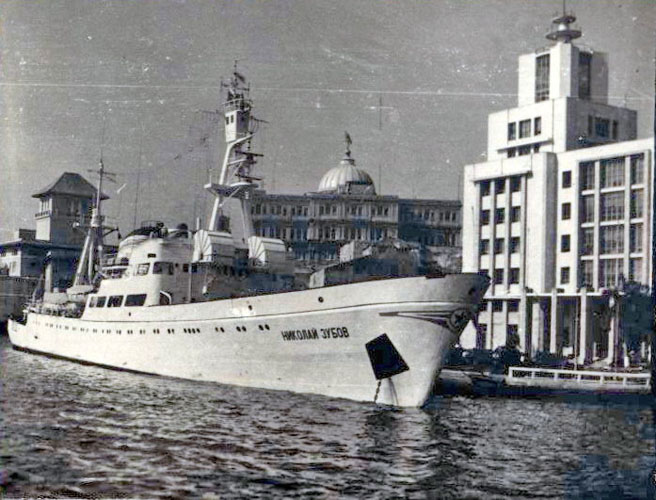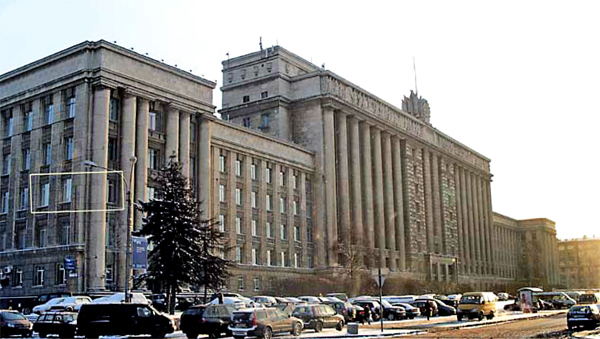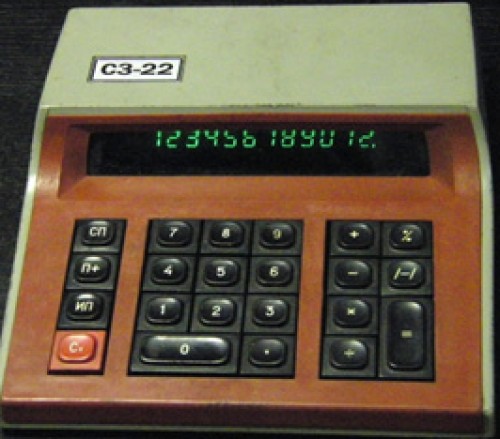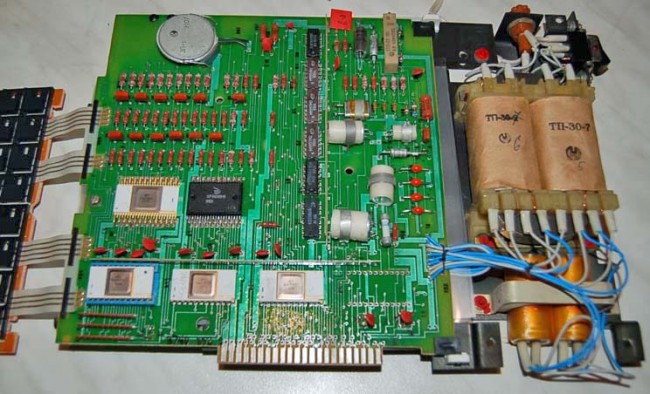WHALE JUMP
WHALE JUMP
«Whale Jump» is an extremely complex emergency surfacing manoeuvre, which can save a submarine in distress, provided that its captain and crew have courage, experience and determination. An action taken in extreme circumstances by a talented and brave leader and his team to save the day can be called a «Whale Jump».
«Whale Jump» is the name of this book, about the creation of the command system of the Soviet submarine Project 877 (Kilo class) also known as «Varshavyanka».
«Whale Jump» is a historical account of how the submarine’s combat and navigation system «Usel» (Russian for «The Knot») came into being.
«Varshavyanka» and «Usel» are still deployed in the 21-st century by the navies of Russia, India, China, Iran, Algeria and other countries.
Their creation 40 years ago has tied an incredible «destiny knot» of many people’s lives – a Leningrad team of young and enthusiastic developers and their forever to be loved teachers and leaders: Filipp Staros and Josef Berg, talented American engineers of amazing and tragic fates. More than once they had to execute a «Whale Jump», was luck always with them?
Intelligence service conflicts, daring scientific endeavours, collaboration with the great creators of submarines, aircraft and spacecraft, the emergence, development and downfall of Soviet microelectronics, all formed the destiny knot described in this book.
The author, Mark Galperin, was born in Leningrad and educated at LITMO University. He joined the design bureau headed by Filipp Staros as a student and worked under his guidance for 14 years. Mark was the first deputy to Filipp Staros in the «Usel» design and was awarded the State Award of the USSR for his part in the Varshavyanka project. He now resides in Australia.
*******
The Author’s Forword
The author would like to offer his excuses for not being able to present his book fully translated into English.
As a compromise a summary of the main facts and events is given together with numerous photos with brief explanations. A very special addition to the theme are the unique documents found in the so-called «Red Folder».
We hope the readers will be able to compensate this drawback by their deep knowledge of the presented problem and by their benevolence and curiosity.
We have brought to your attention in a concise form only a small part of our teachers’ (Fil and Jo) fantastic story, mainly photos and commentaries. We are also getting you acquainted with copies of most interesting documents concerning the creation and development of microelectronics in the Soviet Union. The original documents are kept in one of the biggest archives of Russia – in the Moscow Polytechnical Museum.
The main part of the book «Whale Jump» is a story about the creation and life of what perhaps is the first combat system on microelectronic components in the world. The project’s chief designer was Filipp Staros. We are justly proud of having been participants of these projects.
Staros and Berg have raised a wonderful generation of scientists, engineers and managers, who have worked and continue to work in numerous companies and universities of Russia, US, Japan, Canada and Israel. People who are passing on their knowledge and creativity to their disciples. They are all descendants of our teachers – Filipp and Jo.
They were talented and successful not only in the field of science, they were gifted musicians, jovial people who loved life.
It was a great pleasure and honour for my colleages and I to learn that the Californian Museum of Computers has agreed to include our most successful and treasured artifacts into their funds and exposition.
If you are interested, additionally to the physical artifacts, I am ready to offer you a few books published in Russia in recent years.
1. Russian Electronics and Computers
Academic Press, with a circulation of 1000 copies, Moscow, 2014.
The book contains short biographies with photos of 1,000 USSR engineers and scientists in the field of computer technology.
2. St. Petersburg/Leningrad school of electronics – Digest of Articles.
Academic Press, with a circulation of 1000 copies, St. Petersburg, 2013.
Among authors of the articles are known to you Zhores Alferov and Victor Flowers.
3. My book «Whale Jump» which is dedicated to the great achievements of my teachers Staros and Berg in microelectronics embedded systems, as well as the industrial and military computer management systems. For many years I held a position of a deputy chief designer under the direct leadership of Philip Staros, chief designer.
I consider «Whale Jump» an addition to probably known to you Steve T. Usdin’s book «Engeneering Communism». Mr. Usdin is familiar with my book and he wrote a review for it. I will be glad to donate a copy of my book and accompanying DVD which contains a fascinating documentary about Staros and Berg’s lives into your museum fund.
4. DVD «Whales Jumps» (3 Gbytes) – full collection of copies of documents, papers, fotos and video about Staros & Berg and the Soviet Silicon Vally.
These original documents will be instolled in Archives of Russia and Moscow Politechical Museum.
5. Mark Galperin et al.: Microcomputers «Electronica S5» and their applications, published 1980, print run of 34,000 copies.
There have been many guidance and data processing systems made on the basis of these computers. The developers of this project were awarded numerous government awards and USSR State Prizes.
The most important applications of this computer are the nuclear reactor control system on the second block of the Beloyarsk Nuclear Power Station and the «Usel» guidance system for diesel submarines.
My colleagues in Russia and I (currently I live in Australia) have gathered a collection of microelectronic devices, ferrite memory cubes, blocks and other unique devices, and we will be happy to donate a part of this collection to your museum. The other part will be included into the exhibits of the Polytechnical Museum in Moscow after the museum opens its doors after a complete restoration in 2018. This Museum has already got a unique sample of the desktop computer UM1-NX, a photo of which you can find on page 62 of my book «Whale Jump».
Staros’s and Berg’s children and their families moved to the US from Russia many years ago, they all live in California. They have been very supportive and enthusiastic about the idea of expanding the Russian collection of the Computer History Museum exhibits.
Compiled by:
Galperin M.P, Lavrentyev R.N,
Vasilieva E.N, Lokshina L.A.
*******
PLACES WHERE THE SOVIET MICROELECTRONICS WAS BORN AND DEVELOPED:
1956-1960
A garret in a building in Volkovskaya St. in Leningrad (no photo has been preserved).
1957-1962
What is microelectronics and where its capital is located (vide Document VIII in the Red Folder)
1960 – 1973
«The Palace of All Palaces» in Leningrad. In the photo the windows of Staros’s study and laboratory have been singled out. This is the place where the decision to set up the Silicon Valley in Zelenograd has been taken. The story of how this decision was taken.
1970-2002
The Microelectronics Crystal Palace in Leningrad.
*******
INTEGRAL MEMORY ON
MULTI-HOLE FERRITE PLATES AND LARGE SCALE INTEGRATED CIRCUITS AND THEIR APPLICATION
INTEGRAL MEMORY CUBES ON MULTI-HOLE FERRITE PLATES
Description:
• Based on a multi-hole ferrite plate marked with printed conductors replacing manual firmware cubes on toroidal cores.
• In 1962–1972 memory cubes CUBE-1, 2 and 3 were manufactured in nine production plants of the electronic industry and other ministries, while also used in civil and military computer models. Their production continues to this day.
*******
1956-2000
Cube 1. It was used in controlling computers UM1-NX, in the system «USEL» and in the computer «Electronica K-200».
1965-1973
Cube 2. It was used in drone space deviсe «Venera».
1970 – up till nowadays.
Cube 3 and memory blocks based on Cube 3 and on hybrid integral schemes. They were used and continue to be used in a great number of special devices in aviation and astronautics. Cubes 1,2,3 were manufactured at dozens of plants belonging to different ministries. As far as the author knows they were still made in 2010 to be used as spare parts of board devices that are still functioning. The reason for their longevity is the high level of their radiation resistance.
*******
Presentation at the SORUCOM-2014 International Conference
Integral Memory Cubes
Rafail Lashevsky
Boston, USA
Vladimir Havkin, Rudolf Lavrentyev
St. Petersburg, Russia
Abstract – The report focuses on the fate of integral ferrite memory cubes that were created by a team led by two Americans: Alfred Sarant and Joel Barr, whom we have known all our life as Philip Georgievich Staros and Josef Veniaminovich Berg.
I. Realization of the Idea
After the arrival of P.G. Staros (Sarant), and J.V. Berg (Barr) to the Soviet Union in 1956, and the establishment of a laboratory CO-11 at the Radioprom factory in Leningrad, one of the first tasks was to develop a memory storage (memory) for the electronic computer.
In the 1950–60 premicroelectronic era, the primary means of storing operational information was memory in miniature ferrite cores. Such memory devices were assembled by hand and were considered one of the most expensive and capricious parts of any computer. For the large stationary machines with the maximum available amount of memory it was, obviously, the only possible solution at the time. The fate of a miniature embedded memory for on-board and industrial control computers, communications equipment and measuring instruments was much more complicated. The attempts to solve the problem within the framework of reducing the amount of core memory, in most cases led developers to inefficient design decisions, and often simply not allowed to create the necessary equipment. It is therefore quite natural that at the beginning stages of the creation of their first compact computer, UM-1, Staros and Berg immediately faced this problem, started looking for a solution and found it.
The memory cube on multihole ferrite plates (MFP), previously proposed by the American scientist J. Reichmann, and was chosen as a prototype.
He was the original creator; and Staros and Berg spotted the very first publications on this new product, which appeared in the second half of the 50s in American magazines, during their weekly intellectual marathons in the LAS – Library of the Academy of Sciences.
II. Digression
What loops can occur in human destinies!
In 1967, at the height of the Cold War, in the Leningrad House of Scientists, meeting two Americans, two talented engineers working on the same problem on the opposite sides of the Iron Curtain – Jan Reichman and Joe Berg.
They had created integral memory cubes on multihole ferrite plates. Of course, these cubes were primarily needed for the on-board control systems of Soviet and American missiles and space objects.
It was decided to create an integrated ferrite memory, with its main part being a multihole ferrite plate marked with printed conductors replacing manual firmware cubes on toroidal cores.
Let’s name the main producers of the cubes on multihole ferrite plates. The first was a test plot within Staros’ Leningrad Design Bureau (LDB), 1962.
They not only produced prototypes and worked out serial technology, but also for many years conducted the delivery for the most demanding applications.
In 1962–1972, memory cubes KUB-1, 2 and 3 have been mastered in nine production plants of the electronics industry and other ministries, while also used in civil and military computer models. Their production continues to this day.
The first production plant was LEP (Leningrad Electromechanical Plant). It not only provided a complete set for UM1-HX, but also independent supplies for other needs.
Serial production of ferrite plates was carried out at the Leningrad ferrite plant (LFP). Half a century after the creation of the first cubes, at the end of the 1990s, all the plants that had produced these cubes ceased to exist. Only LFP has managed to collect all the technological support for these dead plants and resurrect the production of the cubes. It was thus possible to provide military supply orders of these products to refill kit parts for the equipment that has been in service for 50 years – where the unique opportunities of ferrite cubes couldn’t come into play even with the most recent advances in microelectronics. This information was kindly provided to us by today’s managers and employees of “Magneton” plant, its CEO Anatoly Ivanovich Firsenkov.
Serial production of the Cube-1 and Cube-3 at the Khmelnitsky plant “Cation” continued from 1972 to 1992. For some time the cubes were also produced at the “Kulon” plant, a part of the Leningrad Union “Positron”. Institutes and factories of Zelenograd Center of microelectronics were one of the first who mastered and for many years continued a mass production of several models of integrated ferrite cubes. The first among them was “Angstrom” plant, even before it became a manufacturer of integrated circuits. Further production was carried out in the Research Institute of Microdevices and continued until 1991.
For many years, the cubes had become an integral part of the “Salute” lorries that were installed on the manned space ships and space stations. The creator of these machines and systems is the collective of the Microdevices Research Institute under the direction of a true genius – Hero of Socialist Labor Gennady Yakovlevich Guskov (1918–2002).
This institute has successfully developed its work, putting into practice the principles of vertical integration in modern microelectronics. Gennady Yakovlevich managed to do something that Staros wasn’t allowed – make the first entrance into the «microelectronic the space program.»
Staros and his team were able to make a breakthrough in the difficult field of submarine construction.
Manned space flight was not the only on-board application of our cubes. For many years, they equipped the on-board control systems of academician V.P. Makeev’s submarine-based ballistic missiles (1924–1985).
Cubes were also produced at the radio industry factories. One of them was the place for the peculiar event, when, as a result of a thoughtless passion for rationalization, some changes had been added into a cube construction by the factory workers, resulting in massive disruptions in the composition of the on-duty missiles. Imagine the Cubes Chief Designer’s state until he figured out the cause of the failure and cancelled the result of “rationalization”!
At this time, active works on the project of a small configuration of a computationally-control machine UM-1 for military and national economic objectives were already being conducted, so the integrated memory cube was immediately evaluated- for both its advantages and disadvantages. That initiated patrons’ usual brainstorming, as a result of which Soviet integrated memory cubes were born, quite different from American ones in their design and technological solutions. Instead of cast ferrite plate with holes for the memory cell formation appeared a moulded plate in which holes were formed during ultrasonic insertion.
It does not matter now which decision was more promising. What is more important – in this example we can see from what and how the parity in the field of armaments was formed, and how real progress in the technical race depended on the accuracy of the development areas choice. We can also see the “master secret”, which Staros and Berg brought to the Soviet microelectronics – the search for new ideas in the world’s scientific literature and periodicals, introduction of these new products to the superiors up to the highest levels of the country’s leaders and their subordinates at all levels, from those in their closest circles to the beginning young engineers. Inability or unwillingness to go this way made any employee look plain boring in the eyes of the chiefs, and such people very quickly tried to find another job.
By the special government decree, UVM UM-1NH was introduced into series production at LEP, which until then used to produce electric meters. The mass production of “Cube-1” was also utilized there. Leningrad ferrite plant manufactured ferrite memory plates and decoder for it. Memory cubes had been developed for national economic applications; hence they had narrow temperature range and low mechanical and climatic stability. However, it became necessary to use them as a part of the submarine electronic equipment, which our company was beginning to develop. In this regard, the developers had a completion design of a memory cube in order to meet the requirements of “Moroz” marine groups. The result was a military modification “Cube-1M”.
Since country’s other micro miniature memory cubes had not been developed, an interest in their use in military equipment rose among a number of defence companies, particularly for the equipment operating in a narrow temperature range, or in a thermostatic version. The decision of the Sverdlovsk SRI of Astronomy, that was developing electronic equipment for K.B. Makeev’s rockets, was the most radical.
In agreement with us, this SRI retained all the stuffing of the memory cube while redesigning it by giving it the mechanical strength necessary for missiles. These cubes made Soviet “Polarises” fly.
Simultaneously with the development of cubes “Cube 1” in mass production and the start of their operation as a part of devices and systems, the development of a new memory cube “Cube 2” had been carried out. It was decided to move from bit to number plates with decreasing hole diameter of memory cells to 0.18 mm. This allowed using the effect of an unlimited magnetic flux around the holes to extend the temperature range to minus 40 – plus 60 ° C, which provided an opportunity to apply these memory cubes in many kinds of military equipment without a temperature control. The 128 digits memory cube was composed from 8 cassettes, each of which had 16 plates of 18 bits and the 16 properties element decoder. Terms of Reference for the development work had been agreed with the Ministry of Defence and all the work was carried out under the control of the military office.
Upon completion of the development work, technical documentation had been delivered to Zelenograd, and in 1966, “Angstrom” plant began mass production of “Cube 2”.
The development of on-board equipment for memory cubes was conducted by clients in close contact with our company. The closest business and even friendly relations have been established with such well-known radio-electronic Research Institutes as «Granite», All-Russian Radio Research Institute, “Neptune”, “Electro automatics”, “Electrical Appliance” and others in Leningrad, as well as enterprises in Moscow, Sverdlovsk, Ulyanovsk and other cities. These relationships allowed us to keep track on requirements for new developments. Thus, already in 1964, the suggestions on the further expansion of the temperature range and increasing of the memory cubes speed had been shared. To meet these needs, as well as to ensure maximum satisfaction of the requirements of military standards, the development work Cube-3 had been performed in 1965–67. The production of these memory cubes in the test area and their delivery to customers had been launched. At the same time a question on the organization of the ferrite plates production at the “Kulon” plant and memory cubes at the “Meson” plant in Leningrad had been decided. Almost simultaneously with the completion of the development work “Cube-3” and its mastering in pilot production, began the development of a number of memory blocks for Cube-3 in development work “Electronics-300” for a wide range of applications.
Earlier, the task of creating random access memory (DRAM) for each particular application was solved by developing specialized blocks in accordance with the requirements of the TOR. It’s not difficult to imagine how much effort and funds were put into such a way of solving the problem, taking into account not only the cost of labour for the schemes and designs development, but also the need for small-scale production of each type of unit, with all the ensuing economic consequences. As far as we know, the idea of creating a number of memory blocks as components of a wide application was not declared by anyone until “Electronics-300”, and no attempt was made for its implementation in specific developments. We were the first to make an attempt and succeed.
News of the alleged mass production of memory blocks very quickly spread across the country. The plant began to receive applications for the supply of blocks and cubes of memory, as well as taking delegations of prospective customers. Many of those who had previously established relations with us, received information straight from the horse’s mouth. As a result, by the time of the start of production, the plant had a portfolio of orders for all the amounts which it could make. It had a very serious effect on the attitude towards the introduction not only of the developer and the plant, but also leadership of 10 GU IE.
These orders cover all the important areas of military equipment. Thus, memory blocks were laid into the apparatus for Tupolev’s bombers – “invisibles”, airport landing radar, telephone and radio systems, ship control systems, etc., etc.
From the very beginning of the introduction of RAM»Electronics-300”, Izhevsk radio plant showed great interest. The chief engineer of the plant repeatedly came to Khmelnitsky plant “Cation”. Thanks to him and his team RAM «Electronics-300″ was installed into navigation for submarines.
We have established special relationship with space enterprises, where specifications of RAM «Electronics-300″ turned out to be out of competition in all respects, primarily on the radiation resistance. Very close relationship has been established with the firms of space equipment Chief Designers.
At the end of the report, we would like to bring to your attention two photos of RAM blocks (DRAM), which equipped the control machines for general industrial use “Electronics K-200” and the combat information control system (CICS) «USEL”.
In the course of 40 years this system had been set to 75-submarines “Varshavyanka”, which still operate in the Russian Navy, the navies of India, China and other countries.
*******
Furthere on there is some information concerning the meeting which took place at a Leningrad scientific conference between the two creators of integral cubes on multi-hole ferrite plates – Jo Berg and Jan Reichman.

The discussion was not in the nature of compromise but quite friendly. Who and why has won in this battle of intellects time has shown. Reichman’s cubes have been used only for 10 years, where those developed by Jo Berg are still being used. Reichman’s article is presented together with the photo of a blackboard showing written evidence of the heated discussion.
*******
*******
COMPUTERS OF THE
«ELECTRONICA» FAMILY
I. MINICOMPUTER UM1-NX. THE FIRST OF THIS TYPE IN THE WORLD
|
|
This is the Desktop Model Minicomputer UM1-NX. Characterized as «Exceptional from the point of view of its size and power consumption» («Control Engineering», 1966, №5).It had been manufactured for 17 years and was awarded the State Prize.
This computer has become the forefather of several generations of desktops – singleboard and singlechip embedded computers of the series «Electronica C5» during the period from 1962 to 2002.
*******
Minicomputer UM1-NX, here it is opened |
«MICROELECTRONICS IS TO BE!»
F.G. Staros is demonstrating the minicomputer UM1-NX
|
Here he is showing the radio “ERA”… |
…and the same radio with its lid off |

This photo shows Staros and Berg at the peak of their careers. They are receiving a very important visitor in their own laboratory, at their own working place – the visitor is the leader of a great world power, one of the strongest world personalities of the 1960-s – Nikita Khrushchev.
Staros is sitting next to Khrushchev. He is not reporting anything, he is just thinking, getting ready to answer an important question asked by the First Secretary of the Party. He is free in his thoughts, all the entourage is trying to catch his words. The entourage consists of top figures in the field of industry, army and navy. Maybe it is the moment when Staros is going to utter the most important word after which Khrushchev is going to take his firm decision: «Microelectronics is to be!»
*******
Modules for «Usel» and «K-200»

Description:
Constructed at the beginning of the 60-s these handmade integrated reserved componets (microresistors & «naked» transistors) have guaranteed the highest level of reliability during 40 years.
*******
Transformer of angle rotation into binary code KPVK-13
Description:
Consists of two code cylinders made of silver plates and filled with epoxy resin. A gear with flexible contacts recieves information from the rotating cylinders. This transformer features high reliabilityand has operated without repair or replacement for the last 40 years.
This transformer has proved to be the most successful project of the young team from the Garret on Volkovskaya Str. This device is still manufactured at one of the factories. Five years ago when I asked one professional what the reasons for such a longevity could be, he told me: «КPVК-13 has determined the world technical progress for… 40 years».
There are reasons to be proud!
*******
Filipp Staros informing Mstislav Keldysh about the progress
of the «USEL» project

In this photo we see Filipp Staros informing Mstislav Keldysh – the main theoretician of the cosmos and President of the Academy of Sciences of the USSR – about the progress of the «USEL» system project. As a model for the future system the board computer UM2-C which had been developed for the spaceship «Soyuz» was used.
It should be remarked that the logical modules and plates for board computers UМ2-06, UМ-2N (for A.N. Tupolev airplanes) and UМ-2C for the space ship «Soyuz» developed by the Constructor General S.P. Korolev have also been used for the system «Usel» and for the computer «Electronica K-200».
*******
A REWIEV OF THE BOOK «WHALE JUMP» WRITTEN BY THE GENERAL DESIGNER OF NON – NUCLEAR SUBMARINES, DOCTOR OF TECHNICAL SCIENCES,
PROFESSOR YU.N. KORMILITSIN
TWICE STATE PRIZE WINNER OF
THE USSR AND RUSSIA
The creation of the combat information and navigation system «USEL» has been a dramatic breakthrough in two major directions:
– TECHNICAL – because the dimensions, volume, weight and energy consumption were significantly reduced, whereas the functional and operational capabilities were increased many times in comparision with the systems that were being developed at that time within the Ministry of Shipbuilding Industry;
– POLITICAL – because submarines were allowed to go beyond sectorial barriers for the first time and work with the companies of other ministries, i.e. to have a look and jump over the high fences of secret departments.
Later, on this precedent, which may be considered to be equal to a deed, enabled designers to create and implement in the non – nuclear Generation IV submarine «LADA» dozenz of new products which were much ahead of their time.
As any fundamentally new system the CICS «USEL» was developed with great difficulties which have been finally overcome successfully.
This is what the book written by Mark Galperin is about.
The «USEL» system has been tested and upgraded on Generation II submarines of project 641B («TANGO CLASS») and Generation III of projects 877 & 636 («KILO CLASS»), a fact which has permitted the staff to achieve exceptional high results.
The total number of non-nuclear submarines built using this new system has exceeded 75 vessels. As it is often the case, the merits of the creators of CICS «USEL» have not been given their due credits.
My reports at SME board meetings, stating that the CICS «USEL» consists only of 2 or 2 racks, but the number of tasks it may solve is analogous to that produced by huge systems with high power consumption developed by other designers, at that time caused violent resistance at the Ministry and at the shipbuilding board of directors. The thing is that the introduction of CICS «USEL» led to an obvious decrease of the ship displacement and as a consequence would have reduced the consumption of financial and human resources.
In Minsudprom (Ministry of Shipbuilding Industry) there was a belief that if the submarine’s electronic equipment is less than 30% of the displacement volume the ship is unable to solve all the necessary problems. This «selfsublimation» of the combat system, of the acoustic and navigation systems led to the development of underwater mastodonts of Generation III and IV which were inferior in quality to the ships of the «probable enemy» and caused unjustified expenses as well.
It is incredibly difficult to overcome conservatism, but despite all this Russian experts have elaborated projects which are not only up-to date, but also satisfy the demands of the future.
Yu.N. Kormilitsin
*******
II. «ELECTRONICA К-200» – THE BEGINNING OF «USEL»
The beginning of «USEL»
Staros and Berg. These people appeared in Leningrad in the middle of the fifties.
What was known about them was not much. They were both engineers, they came from Prague, so people called them «Czechs».
However from the very first meeting it became clear that their native language was English. Soon we learn that both of them were forced to flee America, where they had worked, due to raging McCarthyism and their being members of the USA Communist Party.
Having worked with them hand in hand for a couple of years you got to know from people you talked to that they had been friends with Julius and Ethel Rozenberg who the American court sentenced to death for having taken part in atomic espionage in favour of the USSR. For us it was not a secret that soon after arriving in the Soviet Union both “Czechs” were awarded the Order of the Red Banner. It was up to one’s imagination to guess what their achievements had been for them to get this military award only a couple of years after their arrival in our country. It was in the middle of the 60-s when Joseph Berg was being admitted to the Communist Party that dozens of people who knew him well listened with bated breath to his inspiring lies that he had come from South Africa, then lived in the USA.
Staros and Berg were extremely talented engineers – that is what made them so loved by their disciples and that’s the reason they continue to be esteemed by numerous disciples of their disciples. Their most fruitful years lasted from 1956 to 1973 and I was lucky to work in their team for fourteen happy and victorious years.
The first of our beloved teachers to pass away in 1979 was the one who was buried under the name of Filipp Georgievich Staros. Berg outlived his business partner and best friend by almost twenty years. It was during the time that he was still alive, that the main events of their complex fate before coming to Russia became known and were confirmed by documents.
These exceptional years of our rise and fall make up the main content of this book. Special attention is paid to the work of my colleagues, my companions and the role I myself played. The work that has become the essence of our lives – the creation of the Combat System «USEL» for diesel-electric submarines. The system that has gained unanimous recognition even from Staros and Berg’s strongest opponents. The project’s chief designer was Staros. I was his first deputy. The history of the development of this system is the basic theme of the book «Whale Jump».
The second theme is the history of the birth of microelectronics in the Soviet Union in which Staros and Berg have played a most important role.
My colleagues and I, despite our young age at that time, have worked in close partnership with Staros and Berg, have participated in the development of fundamental documents – drafts for the Decision of the Communist Party Central Committee and the Soviet of Ministers of the USSR.
In recent years there appeared many publications describing and assessing Staros and Berg’s role in the history of Soviet electronics. I am sure I have no right to ignore these discussions, that is why I believe that this is the most important theme of my book. Besides, to my knowledge, all these publications do not contain any information on the creation history of «USEL»
*******
Microelectronics – the way to «USEL»
The main line of this book is a story about two Americans who came to the USSR for an unknown reason, organized a small laboratory which grew rapidly, and among other things were involved in the birth of Soviet microelectronics and created a highly successful computer system for submarines.
I had to overcome many obstacles before becoming a staff member and then a companion of these two unusual engineers with an amazing fate. This running over obstacles started at the time I was a student and continued for thirty years. It turned out that my student years have, to a great degree, contributed to the success of this scientific and industrial marathon, that is why I’ll start my story from the last stage of my student recollections.
This is the first building of the Leningrad Institute of Fine Mechanics and Optics, the motherland of the Soviet computer science departments.
During the 19th century the debtors’ prison was located here. The famous writer Feodor Dostoevskiy was among the prisonsers of this jail. It was here that he wrote one his most famous books – « The Brothers Karamasov». His creditor who was a very rich merchant was obliged to bring him personally a hot meal every day.
The year is 1959. Only a month remains till the final examination session. I was confident, and I have retained this confidence all my life, that I was studying at the best higher education institution of the city- the Leningrad Institute of Fine Mechanics and Optics. It is the institute my father graduated from and where he later worked. My daughter studied there as well and this institute has played a very important role in my grandson’s fate. Life took me back to my own institute several times, both as a professor and a businessman. My Faculty of Fine Mechanics was famous for its wonderful chair of Precise Time Devices. It was practically the only place in the country where designers, industrial workers and senior executives of watch manufacturing companies were trained. However, we must not forget that at that «non-electronic time» clock mechanisms were ticking not only in watches and alarm clocks, but also in detonators, mines and torpedoes.
There were many other chairs at my institute, such as strength of materials, theory of machinery and mechanisms, machinery parts and others.
There was one other chair which can be singled out, it was the one dealing with gyroscopic devices. In the post-war time a rise in gyroscopic studies was noticed, this was necessary both in traditional navigation of ships and aircraft and in various systems of platform stabilization used in rocketry and astronautics.
Well, and then there was our chair which was absolutely amazing. It was called «Chair of Computing and Calculation Solving Devices». To be able to enrol in this chair in passing to the third course was extremely difficult. It was not enough to have high grades for the previous years of study, but it was almost obligatory to work successfully in the Student Scientific Society which was supposed to show your desire and ability to use your brain and make it work hard. It was highly commendable to work at the chair and to attend elective courses delivered by leading specialists from scientific centers.
The chair has existed since 1937 and seems to be the first chair of computer technology in the USSR.
*******
Blocks for the minicomputer K-200 and the CIS «USEL»
*******
Multi-purpose minicomputer «Electronica K-200»
*******
A SOVIET NAVY OFFICER REFUSED TO OBEY ORDERS THAT WOULD HAVE STARTED A NUCLEAR WAR BETWEEN THE USSR AND THE USA
October 27 ought to be a world holiday, a celebration of the triumph of humanity, and the saving of civilization. Children ought to sing in school about Vasiliy Arkhipov. We already have some international peace holidays like the U.N.’s International Day of Peace (September 21) and the International Day of Non-violence (October 2), established by the U.N. General Assembly to mark Gandhi’s birthday. We ought to mark October 27 as well, as a model of disobedience, cautiousness and humanity. In order to understand the significance of this date, we need to roll back to the start of the Cuban Missile Crisis. On October 27, 1962, Vasiliy Alexandrovich Arkhipov was the one person who refused to start a devastating nuclear war between the Soviet Union and the United States.
One thing the U.S. government was not aware of, was the fact that Khrushchev had already sent several nuclear-armed submarines towards Cuba. All these submarines were under orders to use their own judgement to launch nuclear torpedoes, if they lost contact with Moscow.
One flotilla of four Foxtrot diesel submarines, sent from its Arctic base on October 1, 1962, was composed of a flagship, B-59, and three sister ships, B-36, B-4 and B-130. The commander of the flotilla was Captain Vasiliy Alexandrovich Arkhipov, travelling on the B-59 but not commanding it. On October 27, 1962, out in international waters, a U.S. taskforce of destroyers and patrol aircraft detected submarine B-59 and began harassing it, seeking to «hunt to exhaustion», to force it to the surface where it would be vulnerable and they could drive it away from Cuba. The destroyers used their sonar to focus extreme sound attacks on the B-59. After hours of this torture, the U.S. ships dropped five practice depth charges next to the B-59, as a signal that they wanted the submarine to surface. The U.S. had publicly explained its signalling system three days earlier on October 24, sending a «Submarine Surfacing and Identification Procedures» document to the Soviet Forces. In later years, Soviet submarine commanders reported that they never received this information – the B-59 had lost contact with Moscow for over a week. The Soviets are used to three warning depth charges being used to signal an order to surface, not five. In the end, it appears that the USS Beale and USS Cony dropped 10 ‘concussive grenades’ on the B-59.
It’s important to understand the conditions on board the B-59 at this point. The submarine was designed for use in the chill of the Arctic, and had suffered serious overheating operating in the Atlantic, as the air conditioning could not operate when the outside temperature was above 30C (86F). The temperature throughout the submarine was, according to Orlov, above 45C (113F), rising to 60C (140F) in the engine area. The humidity was also a serious problem, with one crewman reporting in his diary, «It’s getting harder and harder to breathe.» On top of this, the submarine was overpopulated, with staff destined to set up a military base in Cuba. Rations were cut and people were restricted to a single glass of water a day. With the air conditioning failing, CO2 levels had become dangerous, with officers fainting on duty.
On October 27, 1962, at Arkhipov’s insistence, the B-59 surfaced, refused assistance from U.S. destroyers, and made its way slowly home to Russia, where it was given an ignominious welcome. Arkhipov’s role in saving the world remained a secret until shortly before his death in 1998. Author Edward Wilson has written: «The decision not to start world war three was not taken in the Kremlin or the White House, but in the sweltering control room of a submarine … The lesson from this is that a guy called Vasiliy Arkhipov saved the world», – said Thomas Blanton, director of the National Security Archive, a U.S. non-governmental organisation, in 2002. Arkhipov refused to obey the commander of his submarine; he refused to give up on the possibility of a peaceful outcome; he refused to despair. We should celebrate his disobedience and his humanity.
OCTOBER 27 SHOULD BE ARKHIPOV DAY
The first documental confirmation that
«USEL» had been constructed as a microelectronic
system appeared on 27.02.1970
*******
THE CIS «USEL» ON SUBMARINES

Submarine projects 877 & 636 («KILO CLASS»)
*******
Commander of a submarine near the main terminal of «Usel»
|
|
|
|
*******
III. DEVICES DEVELOPED ON THE BASIS OF P-MOS LSIC
|
|
*******
«Electronica C5-11»
|
|
Description:
Microcomputer «Electronica C5-11»
Ukrainian National Institute of Cybernetics, 1975-1980.
Embedded MC without additional modules
Based on P-channel MOS VLSI 536&535 including:
– multi chip 16 digits MP;
– RAM 1024×1 & 64×8 bit;
– ROM 1024×8 bit;
– digital input-output;
Total – 11 different LSIC
E.A. Petrosyan, the director of the «Posistor» plant is demonstrating the microcomputer C5-11
TV Adapter for Microcomputer «Electronica C5-12»
Description:
This TV adapter can be used with different devices, such as OSU-4 and others.
OSU-4 – Industrial system based onmicrocomputer «Electronica C5-12»
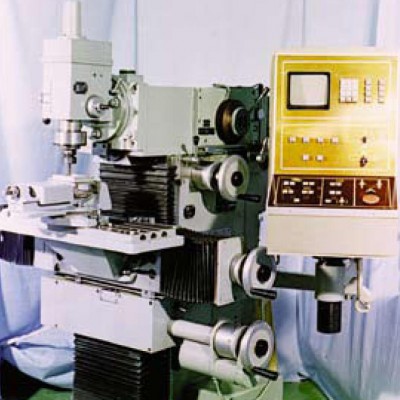
This model has the capability for external RAM,
ROM and input/output devices to be added.
*******
Multi-plate microcomputer «Electronica C5-02»
Microcalculator «Electronica C3-22»
Description: Based on one P-MOS LSIC.
*******
The chief engineer of «Svetlana» company V.D. Stepanov is showing the first Soviet engineering microcalculator to the first woman cosmonaut – Valentina Tereshkova
*******
IV. MICROCOMPUTERS ON THE N-CHANNEL MOS-LSIC
Single board computer «Electronica C5-21»
for industrial systems

Single board microcomputer «Electronica C5-22»
for military systems
Description:
• Based on N-channel MOS VLSIC 5861K1
• 16 digit microprocessor, 200,000o/s; 586 RU1-256xRAM;
• 586 RE1 – 1024x16ROM, parity check & self-repairing;
• 586 IK2 – parallel input-output, interruption & other digital functions.
Chess computer «Electronica IM-01»
Description:
Compact electronic chess game offered for public consumer. It is based on the microcomputer «Electronica C5-41» and has seven chess game levels with a choice for the next movement, time from 10 seconds for the first level up to 10 minutes for the seventh level.
*******
V. SINGLE CHIP MICROCOMPUTERS
|
|
*******
Автор: Гальперин Марк Петрович | слов 7591Добавить комментарий
Для отправки комментария вы должны авторизоваться.















